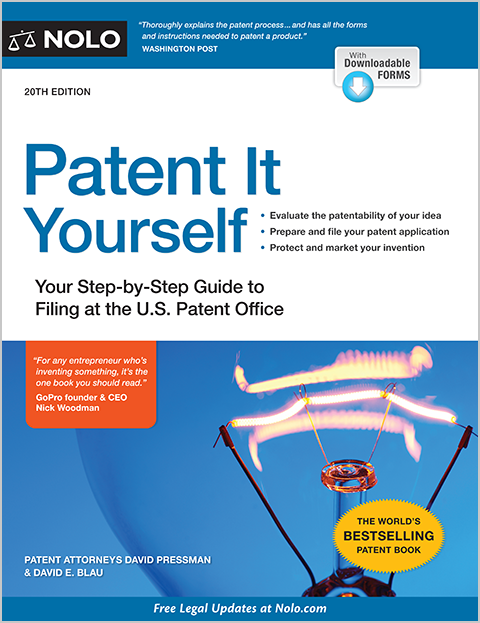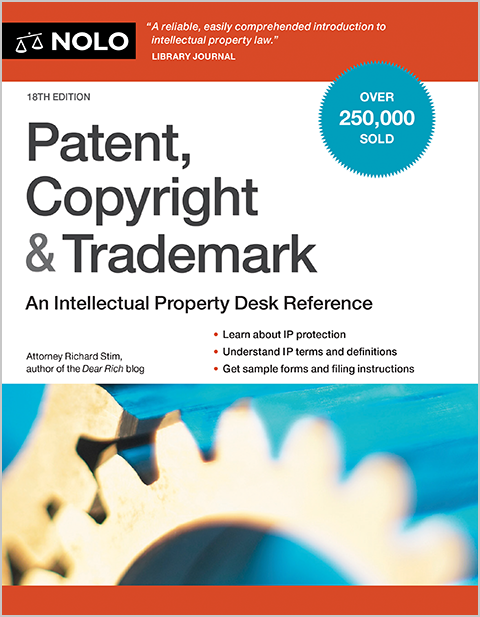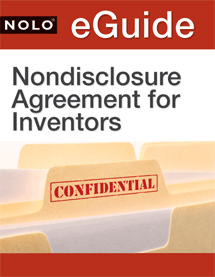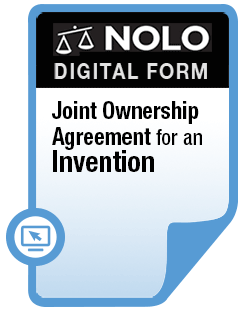A look at what AI is and how it works, when AI-generated works can be copyrighted, and some of the cutting-edge AI copyright legal issues in the courts.
How is copyright law—a body of rules and practices built to protect original, human-created works—adapting to meet the challenges of artificial intelligence (AI)? While it's still early days, the basic rule should come as no surprise: Works generated wholly by AI, without any human input or creativity, can't be copyrighted. But that rule barely scratches the surface.
Cutting-edge copyright issues are emerging, and courts have just started to take them on. At the risk of over-generalizing, most of those issues concern how AI models are trained—how they're taught to mimic human intelligence and generate text, music, pictures, and more (generative AI).
As we'll see, teaching AI models how to create like humans necessarily involves the use of huge amounts of copyrighted material. Copyright owners, understandably, want to protect their valuable property rights. The stakes—billions of dollars in AI-related revenues—are staggeringly high.
We begin with a quick review of what kinds of things a copyright protects. From there, we turn to the key issues surrounding AI and copyright, including:
- the requirements for copyright protection, and how they apply to AI-involved works
- the human-created element and its close corollary, the creativity requirement
- what AI is and how it generates text, pictures, and more
- copyrighting AI-assisted works, and
- an overview of the main AI and copyright issues being fought over in court.
What Is a Copyright?
While state law usually determines property rights—what property is, who owns it, and the like—copyright is an important exception to that rule. Copyright law, codified in Title 17 of the United States Code (the Copyright Act), is under the exclusive authority of the federal government. As a rule, any state law that conflicts or interferes with federal copyright law is preempted, meaning the state law must yield to federal law. (17 U.S.C. § 301 (2025).)
A copyright is an intellectual property right that protects "original works of authorship fixed in any tangible medium of expression." (17 U.S.C. § 102(a) (2025).) We explain what this means in the next two sections.
Among other creative works, copyright protects:
- movies
- books
- songs
- photographs
- poems
- paintings, and
- computer software.
Requirements for Copyright Protection
What are the requirements to qualify for copyright protection, and how might they impact the copyrightability of AI-assisted works? Over many decades, the United States Copyright Office and federal courts have interpreted the Copyright Act to require these elements.
- A reproducible form. The work must be in a form—generally, written or recorded—that can be perceived and reproduced. This requirement isn't a problem in the generative AI context.
- Copyrightable subject matter. The work must fall into a category of things that can be copyrighted. These categories include (but aren't limited to) artistic, dramatic, and musical works, as well as computer code. (17 U.S.C. § 102(a)(1)-(8) (2025).) AI-generated materials don't have a problem here, either.
- Created by a human. A human—not an animal, machine, or supernatural being—must have created the work. As applied to generative AI, this element can cause real problems.
- Human creativity. For a work to be copyrightable, it must show at least a minimal degree of creativity. And the creativity must be attributable to a human creator, so machine-generated works often hit a wall here, too. In addition, simply copying another's work won't suffice.
Copyright and Registration
As soon as you create a work and put it in a tangible form like a recording or writing, it's copyrighted. But just having a copyright, by itself, might not be enough.
To be able to enforce your copyright (by suing for copyright infringement), you need to register it with the U.S. Copyright Office. Registration isn't difficult or expensive, and it brings real benefits.
Copyrights have a limited life span. The length of a copyright depends on when the work was created, as well as a few other factors. To learn more, have a look at our article about how long copyright protection lasts.
Exclusive Rights
Copyright owners have the exclusive rights to reproduce, distribute, perform, display, and create derivatives of their copyrighted works. (17 U.S.C. § 106 (2025).) A derivative work is one based on a preexisting copyrighted work that's somehow been changed.
For example, Harry Potter movies are derivative works of the Harry Potter books because the books have been adapted into motion pictures. A stage play adaptation of a movie screenplay is a derivative work of the movie.
The Human-Created Work Requirement
Today's human-created work requirement is rooted in the mandate that a copyrightable work must be "original." When the Copyright Act first became law, and for most of its history since then, federal lawmakers didn't foresee any need to specify that a work must be human created. Machine learning and AI were the stuff of science fiction, so there wasn't a reason for this sort of corollary.
Earlier Decisions
In earlier copyright registration decisions, the Copyright Office found that these nonhuman-created works weren't copyrightable:
- a photograph taken by a monkey (see below)
- a mural painted by an elephant
- driftwood shaped by the ocean, and
- a song naming the "Holy Spirit" as the author.
Federal courts have agreed with the Copyright Office. For example, in Trade-Mark Cases, 100 U.S. 82, 94 (1879), the Supreme Court said that copyright law was meant to protect works "founded in the creative powers of the mind."
The Role of Human Creativity
To be eligible for copyright protection, a work must involve some element of human creativity. The Copyright Office and federal courts view this requirement pretty liberally. There's no fixed or rigidly defined creativity formula. Even a bit of creativity will do, but it must be attributable to a human creator.
Creativity means more than just copying and pasting someone else's work. Some copyright owners have claimed that AI models do no more than that. These kinds of claims often come down to case-specific facts that must be individually reviewed and decided.
AI: What It Is and How It Works
In the simplest terms, an AI "model" is a sophisticated set of software instructions. You might see these instructions referred to as "algorithms." Other common terms for AI models include "chatbots" or "bots," for short. The term "large language model" usually refers to a model that produces text or similar outputs.
Training Generative AI Models
Our main interest here is in generative AI models. These models are trained by feeding them huge amounts of data so they learn how to mimic an aspect of human behavior, like language. Generative AI models have been taught how to produce a wide range of works—works that, until recently, were thought to be exclusively within the province of human creativity.
But teaching models to write, speak, and create as humans do comes at a cost. Models need staggering amounts of data to develop these capabilities. Where does all this training data come from?
For massive, generative AI models, the data usually is "scraped" from the internet. Computers scour the internet for content, copy it wholesale, and turn it into AI training data. The problem here is easy to foresee: Much of that scraped content is copyright protected.
Copyright owners, concerned that their property rights are being infringed, have turned to the courts for remedies. As we discuss below, these lawsuits are still in the early stages. The Supreme Court almost certainly will have the final say.
How Generative AI Models Work
When a user prompts a generative AI model to produce a text or an illustration, all models respond by using what they learned from their training data. But the most powerful models don't stop there. They search the internet in real time for more clues about how to answer.
Suppose you ask a generative AI model to write a song like one created by Mozart. The model has been trained with Mozart's symphonies, and with materials that discuss and describe his compositions. The model looks at that data. Some models also check online for new or updated information about Mozart.
Once the model is satisfied (correctly or not) that it knows what it needs to know about Mozart's music, it starts working on a response. Based on the available data and your instructions, the model predicts what notes belong together, in what specific order, to produce a Mozart-like song.
Generative AI models are sometimes called "next word predictors." They don't compose and write the way humans do. Instead, given what they've learned, they predict—usually with impressive accuracy—what word, note, or pixel should follow the one that immediately precedes it.
Copyrighting AI-Assisted Works
Recall that one of the requirements for copyright protection is a human-created work. From that requirement, it follows that anything created entirely by a generative AI model, with no or almost no human input or creativity, can't be copyrighted.
But what about human-created works that include AI-elements, or that were enhanced, arranged, or assisted by AI? Consider these examples:
- You prompt a model to create elements of an image, then use your artistic judgment to arrange the elements in a finished composition.
- You draft an article, ask a generative AI model to check for spelling or grammatical errors, and make minor revisions based on the model's suggestions.
- You ask a model to draft a subject-matter outline, then use that outline to write a completed essay.
In each example, your creative input or original work dictates the finished work product. The Copyright Office has published official guidance about copyrighting works like these. Long story short: A work must contain at least a minimum amount of human creativity to be eligible for copyright registration. Further, the copyright will protect only the human-crafted elements of such a work.
The Copyright Alliance, a nonprofit education and advocacy group representing the interests of millions of creators, offers these helpful guidelines for registering AI-assisted works.
AI Issues in the Courts
Given everything that's involved—valuable copyrights and the billions in revenues that AI will produce—it comes as no surprise that federal courts are facing a flood of AI-related lawsuits. The most visible cases involve AI developers using copyrighted works to train their models.
Framing the Lawsuit Issues
Though the court battles are mostly in their early stages, the issues are pretty well defined. Copyright owners claim that AI developers are stealing their property, or in copyright-speak, infringing on their copyrights. For example, comedian Sarah Silverman and others sued Meta, claiming that it took their copyrighted material without permission and without paying.
The AI developers, predictably, deny they're infringing on anyone's copyrights. They claim they're protected by the fair use defense. Under this defense, copyrighted materials sometimes can be used for reporting, teaching, research, and other purposes without fear of infringement claims, if certain factors are met. (17 U.S.C. § 107 (2025).)
Federal trial courts have started to make decisions on the fair use defense, but those decisions won't be the final word. The issue is important enough that Supreme Court review is likely inevitable, but that date won't arrive for some time.
Other Solutions to the Copyright Problem
Of course, lawsuits aren't the only way—or even the best way—to end disputes like these. Some AI developers have decided on a negotiation strategy instead. They've made licensing deals with publishers, meaning they have permission to use copyrighted materials as long as the use is within the terms of their agreement.
These arrangements offer clear benefits for both sides. Copyright owners get payment now, instead of having to wait on uncertain outcomes that might be years down the road. Developers, too, avoid the risks of litigation, and they can create and market their models with a better understanding of current and future costs.
As these and other lawsuits make their way to final decisions, negotiated bargains will become more common. One side or the other will find itself on the losing end often enough that the certainty of bargained-for settlements will become preferable.
What to Do Next
The issues we've covered might concern you if you're an AI developer or a copyright owner. For example, you might be worried about infringement if you're developing an AI app using copyrighted materials. Or maybe you're an author who's published short stories or self-help books and you suspect your work has been used without permission.
Either way, if you're concerned about actual or potential copyright problems, you should talk to a copyright lawyer. They can help you work through the issues, get a handle on your rights and legal risks, and plan your next steps.
Talk to a Lawyer
Need a lawyer? Start here.
How it Works
- Briefly tell us about your case
- Provide your contact information
- Choose attorneys to contact you
- Briefly tell us about your case
- Provide your contact information
- Choose attorneys to contact you



